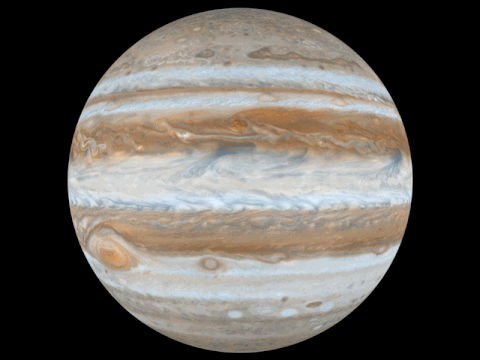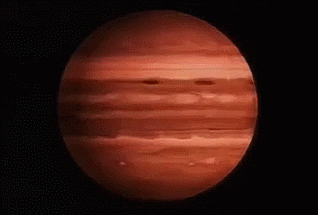



-
The planet Jupiter is the fifth planet out from the Sun, and is two and a half times more massive than all the other planets in the solar system combined. It is made primarily of gases and is therefore known as a “gas giant”.
-
Jupiter’s atmosphere is special because it is the solar system’s largest planetary atmosphere. It is made up of hydrogen and helium, in roughly the same proportions as are found in the sun. However, it also contains much smaller amounts of other space gases, such as ammonia, methane and water. 90% of the atmosphere of Jupiter – a huge proportion – is made of hydrogen. It would be impossible for humans to breathe in this atmosphere. So, if you are thinking of travelling to space to do some hands on astronomy research, you would have to wear a breathing suit when visiting this planet.
-
Only 18 missions to Mars have been successful.
As of September 2014 there have been 40 missions to Mars, including orbiters, landers and rovers but not counting flybys. The most recent arrivals include the Mars Curiosity mission in 2012, the MAVEN mission, which arrived on September 22, 2014, followed by the Indian Space Research Organization’s MOM Mangalyaan orbiter, which arrived on September 24, 2014. The next missions to arrive will be the European Space Agency’s ExoMars mission, comprising an orbiter, lander, and a rover, followed by NASA’s InSight robotic lander mission, slated for launch in March 2016 and a planned arrival in September, 2016.
Equatorial Diameter: 142,984 km
Polar Diameter: 133,709 km
Mass: 1.90 × 10^27 kg (318 Earths)
Moons: 67 (Io, Europa, Ganymede & Callisto)
Rings: 4
Orbit Distance: 778,340,821 km (5.20 AU)
Orbit Period: 4,333 days (11.9 years)
Effective Temperature: -148 °C
First Record: 7th or 8th century BC
Recorded By: Babylonian astronomers

Jupiter Diagram
Facts about Jupiter
-
Jupiter is the fourth brightest object in the solar system.
Only the Sun, Moon and Venus are brighter. It is one of five planets visible to the naked eye from Earth. -
The ancient Babylonians were the first to record their sightings of Jupiter.
-
Jupiter is named after the king of the Roman gods. To the Greeks, it represented Zeus, the god of thunder.
-
Jupiter has the shortest day of all the planets.
It turns on its axis once every 9 hours and 55 minutes.

MORE JUPITER FACTS
-
Jupiter orbits the Sun once every 11.8 Earth years.
From our point of view on Earth, it appears to move slowly in the sky, taking months to move from one constellation to another. -
Jupiter has unique cloud features.
The upper atmosphere of Jupiter is divided into cloud belts and zones. They are made primarily of ammonia crystals, sulfur, and mixtures of the two compounds. -
The Great Red Spot is a huge storm on Jupiter.
It has raged for at least 350 years. It is so large that three Earths could fit inside it. -
Jupiter’s interior is made of rock, metal, and hydrogen compounds.
Below Jupiter’s massive atmosphere (which is made primarily of hydrogen), there are layers of compressed hydrogen gas, liquid metallic hydrogen, and a core of ice, rock, and metals. -
Jupiter’s moon Ganymede is the largest moon in the solar system.
Jupiter’s moons are sometimes called the Jovian satellites, the largest of these are Ganymede, Callisto Io and Europa. Ganymede measures 5,268 km across, making it larger than the planet Mercury. -
Jupiter has a thin ring system.
Its rings are composed mainly of dust particles ejected from some of Jupiter’s smaller worlds during impacts from incoming comets and asteroids. The ring system begins some 92,000 kilometers above Jupiter’s cloud tops and stretches out to more than 225,000 km from the planet. They are between 2,000 to 12,500 kilometers thick. -
Eight spacecraft have visited Jupiter.
Pioneer 10 and 11, Voyager 1 and 2, Galileo, Cassini, Ulysses, and New Horizons missions. The Juno mission is its way to Jupiter and will arrive in July 2016. Other future missions may focus on the Jovian moons Europa, Ganymede, and Callisto, and their subsurface oceans.